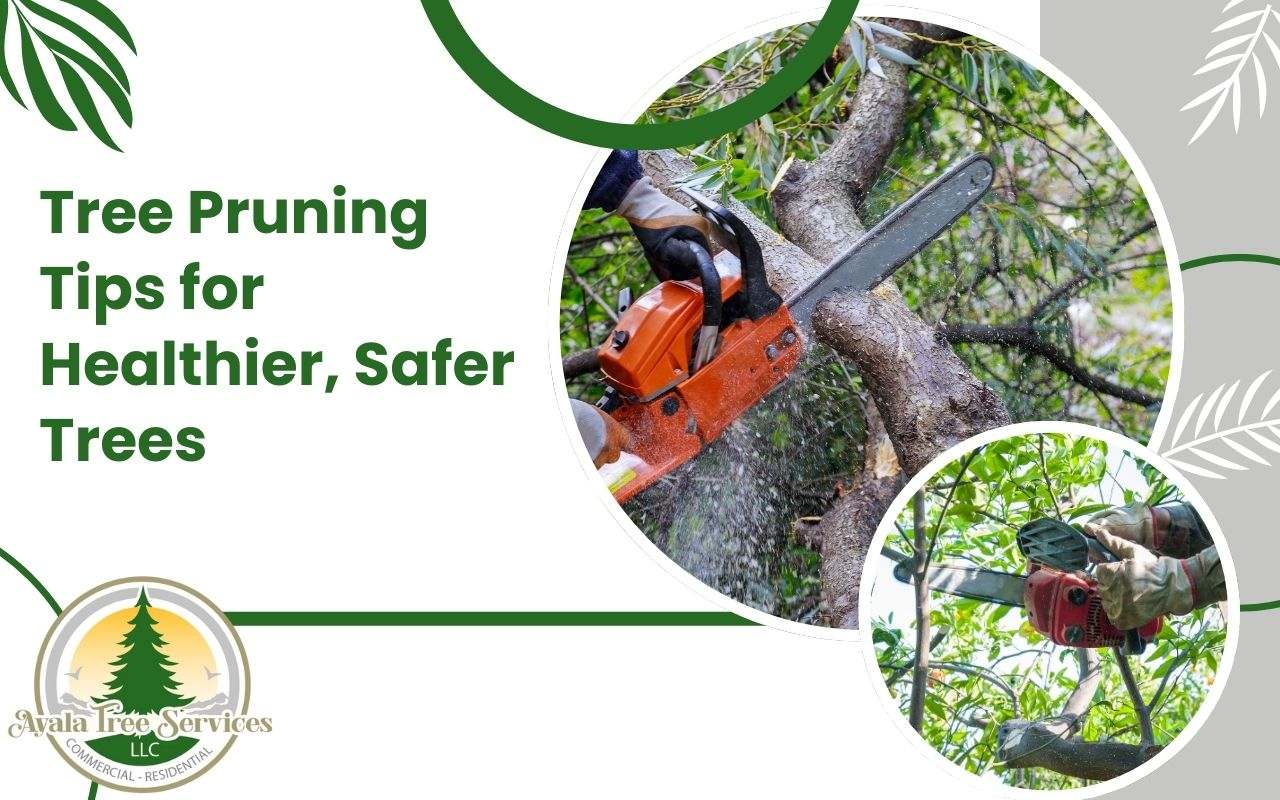
Pruning is essential to maintaining the health and safety of your trees. These tree pruning tips will guide you in shaping trees, removing unhealthy branches, and promoting stronger growth. By following these steps, you’ll ensure your trees flourish season after season.
The Importance of Tree Pruning for Health and Safety
Tree pruning isn’t just about making your trees look better—it’s a critical practice for their health and longevity. Regular pruning helps control the tree’s shape, supports balanced growth, and reduces the chances of disease. It’s also vital for safety, as overgrown or weak branches can pose a hazard to your home and loved ones.
When done correctly, pruning helps manage the tree’s overall health by removing damaged, dead, or infected branches. This reduces the risk of decay and prevents pests from nesting in weak spots. Moreover, keeping trees well-pruned minimizes overgrowth, allowing for better light penetration and air circulation. This promotes stronger branches and reduces the likelihood of fungal infections.
When and How Often to Prune
Timing matters when it comes to pruning. Here are some seasonal guidelines to consider:
- Late Winter or Early Spring: This is the ideal time for pruning most trees. Since trees are still dormant, cutting back branches stimulates new growth as they emerge from dormancy. It also helps you get rid of any branches damaged by winter.
- Summer Pruning: During summer, light pruning can manage growth and remove smaller branches or those blocking views or sunlight. This season is also a good time to identify branches that may need attention after spring growth.
- Avoid Fall Pruning: Fall can be risky for pruning because this is when fungi and diseases are most active. Pruning during this period can expose trees to infection, so it’s best to wait until colder months arrive.
Key Pruning Techniques for Success
Understanding basic pruning techniques will help you maintain tree health effectively. Here are a few methods:
- Thinning: This involves selectively removing branches to reduce density. Thinning increases sunlight penetration and air circulation, which benefits tree health.
- Raising: By cutting lower branches, you create more clearance for walkways, vehicles, and buildings, improving accessibility and safety.
- Reduction: This technique shortens the height or spread of a tree, often to prevent interference with structures or power lines.
Using the right tools is crucial for each technique. Clean cuts heal faster, reducing stress on the tree and lowering the risk of disease.
Safety Tips for DIY Pruning
Safety should be your top priority if you choose to prune trees yourself. Here’s how to ensure a safe DIY pruning experience:
- Use Proper Tools: Sharp, clean pruners and saws are essential for making clean cuts. Dull tools can tear branches, making uneven cuts harder to heal.
- Work from Ground Level: Avoid climbing ladders or using DIY techniques that could lead to falls. Instead, use extension tools to safely trim higher branches from the ground.
- Know When to Call Professionals: Large trees, high branches, or major structural pruning should be left to professionals. Tree care experts have the training and equipment to safely and effectively handle extensive pruning.
Achieve Healthier Trees with Expert Pruning
Pruning is vital to tree care, ensuring healthier growth, safety, and a polished landscape. If your trees need attention, don’t hesitate to contact us for expert pruning services. Our team is here to keep your trees in peak condition, helping you enjoy a beautiful and safe yard year-round.
